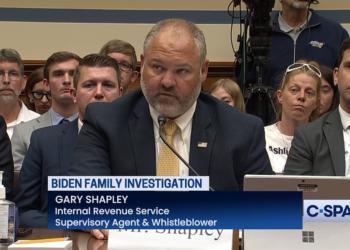If the blueprint passes the House, Congress will be able to move forward on President Donald Trump’s legislative agenda.
While Republicans broadly agree on policies, such as tax cuts, immigration enforcement, and military spending, they disagree on how much government spending to cut.
Holdouts, mainly from the freedom caucus, are pushing for $2 trillion in spending cuts, considerably more than the $4 billion in cuts the Senate bill requires.
“I can’t support House passage of the Senate changes to our budget resolution until I see the actual spending and deficit reduction plans to enact President Trump’s America First agenda,” Rep. Andy Harris (R-MD) said.
The House seems to want to make more aggressive cuts than the Senate in the next budget bill. The Senate leadership has argued that the aggressive cuts are still possible, as the $4 billion cut is only a minimum.
Still, Rep. Chip Roy (R-TX) said he would not vote for a bill with such a low minimum cut. Rep. Jodey Arrington (R-TX) called the Senate bill “unserious and disappointing.”
The budget battle looks to be a repeat of what happened last month, with Rep. Thomas Massie (R-KY) breaking with his party and voting against a continuing resolution because of insufficient cuts.
This time, however, Congress has more time to work out a deal and is more likely to reach an agreement. With the March CR, Republicans were on a time crunch, and Trump urged Congress to pass the bill to keep the government open.
Speaker Mike Johnson (R-LA) has expressed confidence that Congress will send a completed budget bill to Trump’s desk by Memorial Day. Congress will likely depart for its Easter recess on Thursday, however. Johnson likely wants to move forward as quickly as possible to avoid losing momentum in negotiations.
LUNA AND JOHNSON STRIKE DEAL TO END PROXY VOTING FEUD
With the additions of Reps. Randy Fine (R-FL) and Jimmy Patronis (R-FL), Republicans can afford to lose three members in the budget vote. Close to 20 members, however, said they would not vote for the Senate bill in its current state.
The House may not be able to be able to get the Senate to agree to a $2 trillion minimum cut, but it should be able to get more than $4 billion. If the House is even able to get the Senate to agree to a $1 trillion minimum cut, it will likely be able to convince enough of the holdouts to vote for the bill.














